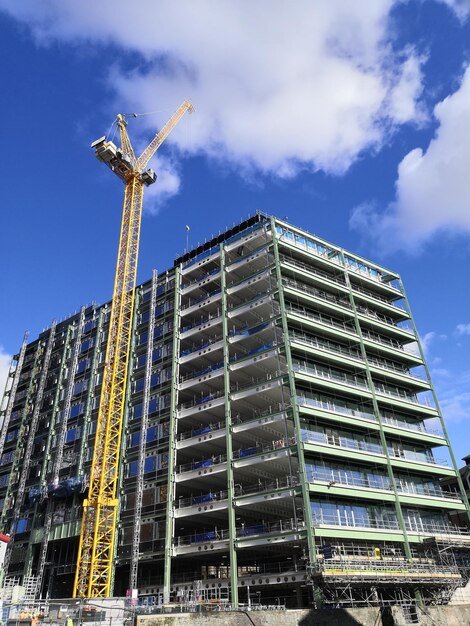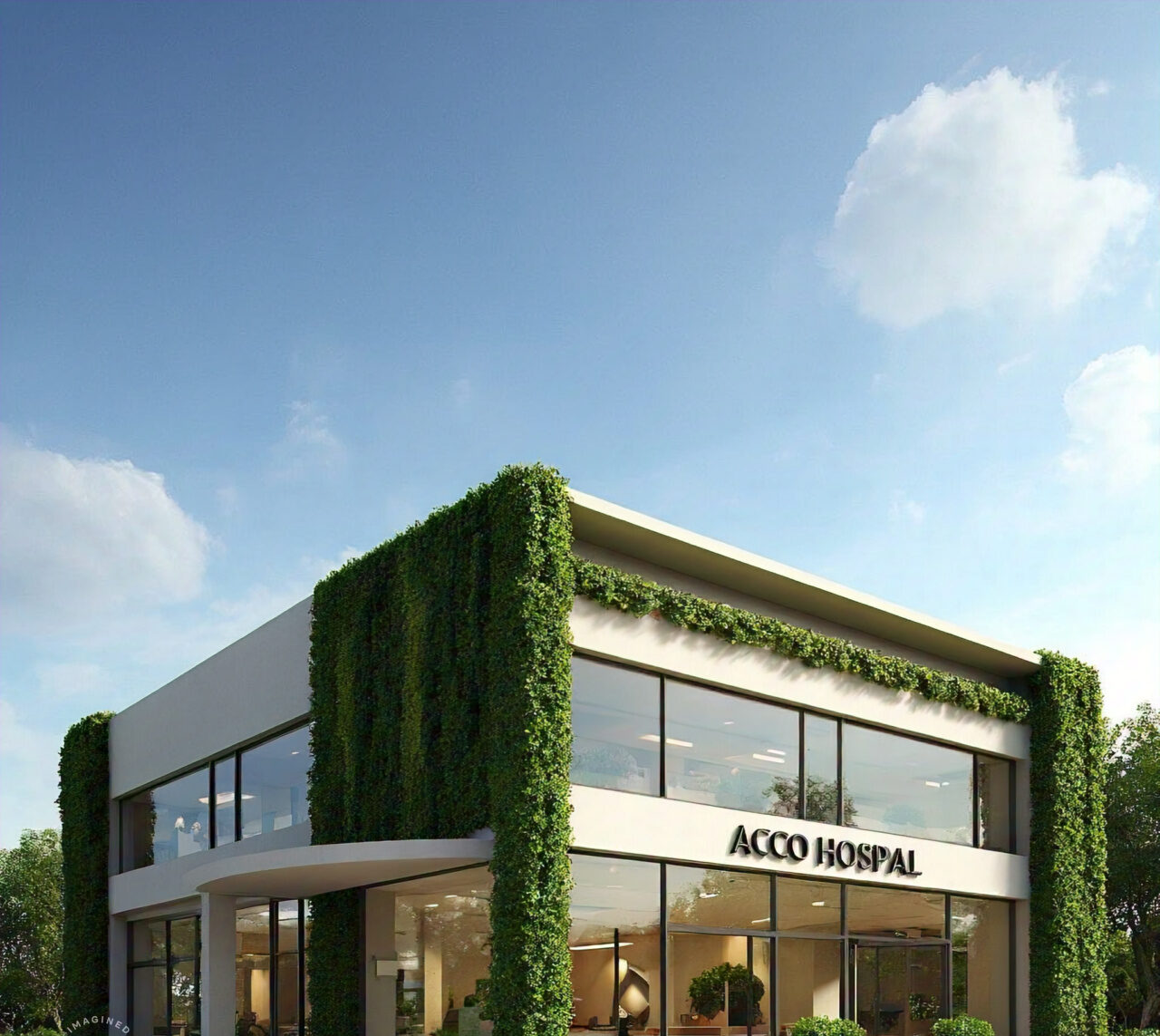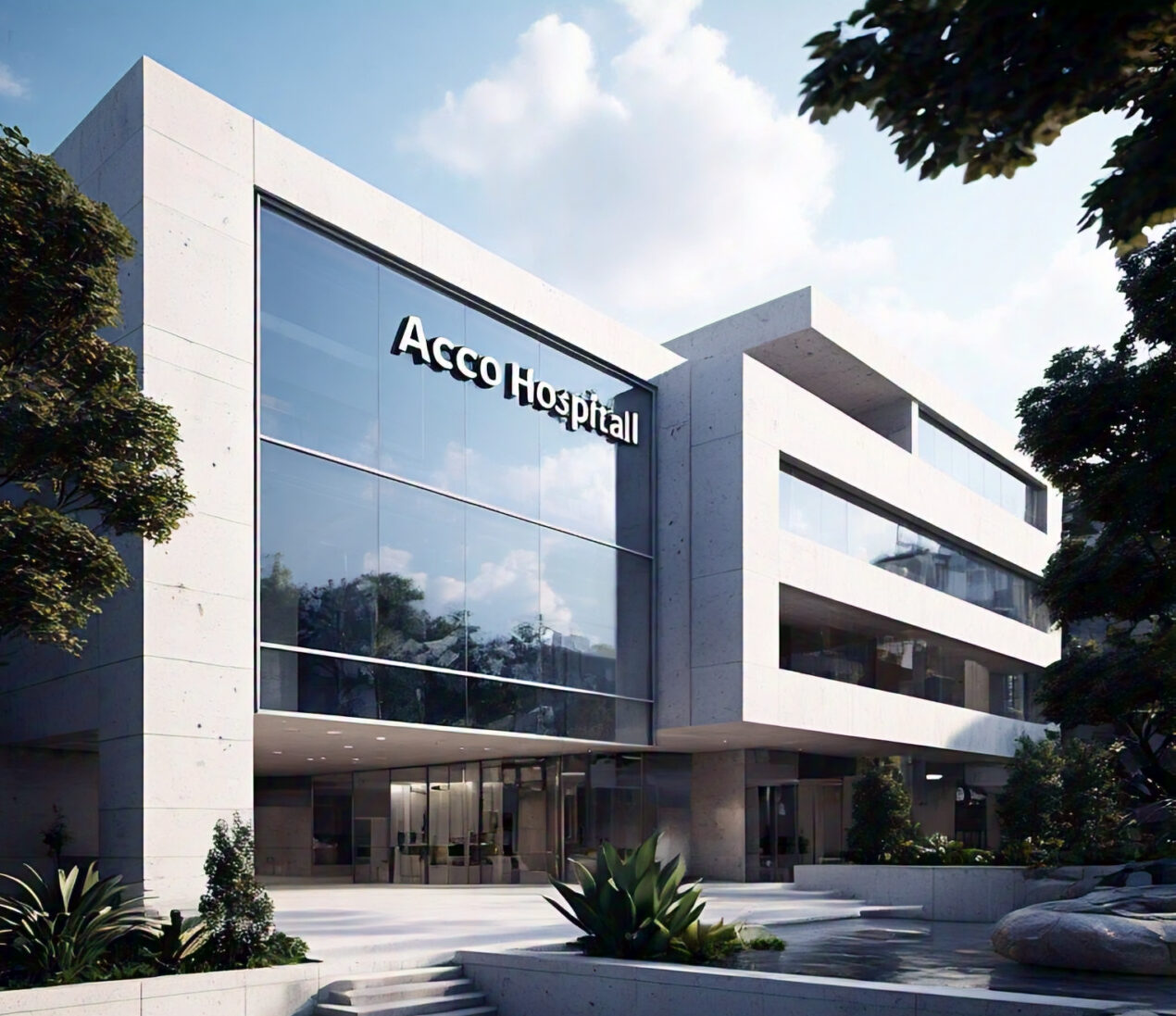
From Concept to Completion: ACCO’s High-Rise Building Expertise
From Concept to Completion: ACCO’s High-Rise Building Expertise
High-rise buildings have become the centerpiece of modern cities, standing as symbols of innovation, urbanization, and economic growth. As cities grow vertically, the expertise needed to design and construct these towering structures becomes increasingly complex. ACCO, a leader in high-rise building design and construction, provides a comprehensive range of services to transform architectural visions into reality. From the earliest conceptual stages to final project handover, ACCO ensures every detail is carefully managed, delivering state-of-the-art skyscrapers that define city skylines.
This article walks you through the entire high-rise construction journey, showcasing ACCO’s unmatched capabilities in bringing large-scale projects from concept to completion.
1. Introduction to ACCO’s Comprehensive High-Rise Services
ACCO stands at the forefront of high-rise construction, offering end-to-end services that encompass every phase of a building’s lifecycle. From conceptual design to post-construction maintenance, ACCO’s multidisciplinary team of architects, engineers, and project managers work in sync to deliver world-class high-rise structures. The company’s strength lies in its ability to integrate design, engineering, and technology, ensuring that projects are completed on time, within budget, and to the highest standards.
Whether it’s a residential skyscraper, a commercial tower, or a mixed-use development, ACCO’s approach is built on precision, sustainability, and innovation, making it the ideal partner for high-rise projects.
2. Understanding High-Rise Building Design
Designing a high-rise building is vastly different from traditional construction, requiring an advanced understanding of structural engineering, aesthetics, and urban planning. At ACCO, design begins with a clear understanding of the building’s purpose and the environment in which it will be situated. Each skyscraper must blend form with function, creating a safe, sustainable, and visually striking structure.
Core elements of high-rise design include:
- Structural Integrity: Ensuring the building can withstand wind loads, seismic activity, and environmental forces.
- Space Utilization: Maximizing vertical space efficiency for residential, commercial, or mixed-use purposes.
- Energy Efficiency: Integrating systems to reduce energy consumption and enhance sustainability.
- Aesthetic Appeal: Creating a design that enhances the skyline and complements its urban surroundings.
ACCO’s design team works closely with clients and urban planners to craft buildings that meet both the practical and aesthetic demands of modern city life.
3. Initial Concept Development
The journey from concept to completion begins with the initial concept development phase, where ACCO collaborates with clients to define their vision. This is where the creative process takes root, as ACCO helps to shape the architectural narrative of the building while aligning it with the project’s goals, budget, and environmental considerations.
Key activities during concept development include:
- Vision Workshops: Understanding the client’s objectives, whether it’s a luxury residential tower or a corporate headquarters.
- Preliminary Design Sketches: Creating early-stage drawings and 3D models to visualize the project.
- Site Analysis: Considering the surrounding environment, including climate, topography, and existing infrastructure.
- Initial Budgeting: Providing cost estimates to ensure the project aligns with the client’s financial goals.
By carefully planning during the concept phase, ACCO ensures that the final design is both feasible and visionary, laying the foundation for a successful project.
4. Feasibility Studies and Site Analysis
Before moving forward with any high-rise project, ACCO conducts comprehensive feasibility studies and site analyses to assess the technical, financial, and regulatory viability of the project. This stage is critical in determining whether the proposed building can be successfully constructed on the chosen site.
Feasibility studies include:
- Geotechnical Surveys: Assessing soil stability and foundation requirements.
- Zoning and Land Use Compliance: Ensuring that the project adheres to local zoning regulations and land use policies.
- Environmental Impact Assessments: Evaluating the project’s potential environmental impact, including energy consumption and carbon footprint.
- Cost-Benefit Analysis: Providing a detailed financial projection to determine project viability.
These analyses help ACCO identify potential risks early on, enabling the company to optimize the project’s design and construction strategy.
5. Architectural Design and Innovation
ACCO’s architectural design process is driven by a commitment to innovation and sustainability. Each building is tailored to the client’s needs while incorporating the latest trends in high-rise architecture. ACCO leverages advanced design tools like Building Information Modeling (BIM) to create detailed 3D representations of the project, allowing stakeholders to visualize every aspect of the building before construction begins.
Innovative design elements ACCO employs include:
- Energy-Efficient Facades: Using smart glass and shading systems to reduce heat gain and energy consumption.
- Mixed-Use Functionality: Designing buildings that incorporate residential, commercial, and leisure spaces into one cohesive structure.
- Green Spaces: Integrating rooftop gardens, vertical landscaping, and open spaces to enhance urban biodiversity and improve occupant well-being.
Through innovative design, ACCO ensures that its high-rise buildings are not only functional but also iconic additions to the skyline.
6. Engineering Expertise for High-Rise Buildings
The engineering behind high-rise buildings is critical to ensuring structural stability, safety, and longevity. ACCO’s engineering team excels in structural, mechanical, and civil engineering, using advanced technologies to address the unique challenges posed by tall buildings.
Key engineering solutions provided by ACCO include:
- Reinforced Structural Cores: Utilizing steel and concrete to create a robust central core that supports the building.
- Wind and Seismic Resistance: Designing buildings with advanced damping systems and flexible structures that can withstand wind loads and seismic activity.
- Efficient MEP Systems: Installing cutting-edge mechanical, electrical, and plumbing (MEP) systems to reduce energy use and ensure occupant comfort.
By applying these engineering solutions, ACCO ensures that its high-rise buildings are safe, resilient, and built to last.
7. Project Planning and Management
ACCO’s success in delivering complex high-rise projects on time and within budget is largely due to its world-class project planning and management approach. From scheduling to resource allocation, ACCO meticulously plans each stage of the project to ensure that construction runs smoothly and efficiently.
ACCO’s project management process includes:
- Detailed Scheduling: Outlining every phase of construction, from site preparation to final inspections.
- Resource Management: Ensuring the right materials, equipment, and labor are available at the right time to avoid delays.
- Risk Management: Identifying potential risks early in the project and implementing strategies to mitigate them.
This comprehensive approach to project management ensures that ACCO can meet the demands of even the most complex high-rise projects.
8. Navigating Building Regulations and Permits
High-rise buildings are subject to numerous building codes and regulatory requirements, which can vary depending on the location. ACCO has extensive experience navigating these complexities, ensuring that every project complies with local, national, and international regulations.
Regulatory expertise includes:
- Zoning Compliance: Securing approvals for land use and ensuring the building fits within the local zoning laws.
- Permitting Process: Managing the submission of building permits and liaising with local authorities to obtain necessary approvals.
- Building Code Compliance: Ensuring that the project meets all safety, accessibility, and environmental standards.
By handling the regulatory process efficiently, ACCO ensures that projects move forward without delays.
9. Sustainable Building Practices by ACCO
Sustainability is a core tenet of ACCO’s approach to high-rise construction. The company is committed to reducing the environmental footprint of its buildings by integrating green building practices throughout the design and construction process.
Sustainability initiatives include:
- Energy-Efficient Systems: Installing HVAC, lighting, and insulation systems that reduce energy consumption.
- Water Conservation: Incorporating water-saving technologies such as rainwater harvesting and greywater recycling.
- LEED Certification: Ensuring that buildings meet the stringent requirements of the Leadership in Energy and Environmental Design (LEED) certification.
ACCO’s commitment to sustainability ensures that its high-rise buildings are environmentally friendly and future-proofed against rising energy costs.
10. Construction Phase: Turning Designs into Reality
Once the planning and design stages are complete, ACCO moves into the construction phase, where the building takes physical form. Managing the complexity of high-rise construction requires coordination between multiple teams and suppliers, and ACCO’s expertise ensures that every element of the building is delivered with precision.
Key stages of the construction process include:
- Foundation Work: Laying deep foundations to support the building’s height and weight.
- Superstructure Construction: Erecting the steel and concrete framework that forms the building’s skeleton.
- Exterior and Interior Finishing: Installing the building’s facade, windows, and completing the interior spaces.
Throughout the construction phase, ACCO maintains a rigorous focus on safety, quality, and efficiency, ensuring that the building is delivered on time and meets all client expectations.
11. Technological Integration in Construction
ACCO leverages the latest technologies to enhance the accuracy, efficiency, and safety of its high-rise projects. Building Information Modeling (BIM) is a cornerstone of ACCO’s approach, enabling the team to create detailed, data-rich models that improve collaboration between architects, engineers, and contractors.
Other technologies used by ACCO include:
- Drones: For site surveying and monitoring construction progress.
- 3D Printing: To create complex building components more quickly and accurately.
- Smart Building Systems: Integrating Internet of Things (IoT) technology to optimize energy use and monitor building systems in real-time.
By integrating these technologies, ACCO ensures that its high-rise projects are built with greater precision and sustainability.
12. Ensuring Safety and Quality Control
Safety is paramount in high-rise construction, and ACCO implements stringent safety protocols at every stage of the project. Regular site inspections, worker training, and the use of advanced safety equipment help reduce the risk of accidents and ensure a safe working environment.
Safety and quality control measures include:
- On-Site Safety Protocols: Ensuring compliance with all safety regulations and standards.
- Quality Assurance Inspections: Conducting thorough inspections at each stage of construction to ensure that all work meets the highest standards.
- Continuous Monitoring: Using technology to track the progress of construction and detect potential issues early.
By prioritizing safety and quality, ACCO ensures that its high-rise buildings meet both regulatory and client standards.
13. Final Inspection and Handover
Once construction is complete, ACCO performs a final inspection to ensure that the building is fully functional and ready for occupancy. This includes inspecting all systems (e.g., HVAC, electrical, plumbing) and making any necessary adjustments before handing the building over to the client.
The handover process includes:
- Client Walkthrough: ACCO gives the client a detailed tour of the completed building, explaining its features and systems.
- Documentation: Providing all necessary documents, including maintenance manuals and warranties.
- Final Approval: Once the client is satisfied, ACCO officially hands over the building, marking the completion of the project.
This careful handover process ensures that the client receives a high-quality, fully operational building.
14. Post-Completion Services and Maintenance
ACCO’s commitment to its clients doesn’t end with the completion of construction. The company offers post-completion services to ensure that the building continues to operate efficiently and remains in top condition.
Post-completion services include:
- Routine Maintenance: Offering maintenance services to keep the building’s systems in optimal condition.
- Warranty Support: Providing support for any issues that arise under the building’s warranty.
- Renovations and Upgrades: Assisting with future upgrades or renovations to meet changing needs.
ACCO’s post-completion services provide long-term support, ensuring that the building continues to perform at its best.
15. Case Studies: Successful High-Rise Projects by ACCO
ACCO has an impressive portfolio of high-rise projects that showcase its expertise in delivering complex, innovative skyscrapers. Notable projects include:
- Skyline Tower, New York: A luxury residential skyscraper that redefined urban living with its sustainable design and smart building systems.
- Ocean Heights, Dubai: A 90-story commercial tower known for its innovative wind resistance features and striking architectural design.
- Eco Tower, Singapore: A mixed-use high-rise that combines residential, retail, and office space with extensive green infrastructure and LEED certification.
These projects highlight ACCO’s ability to deliver high-quality, sustainable skyscrapers that enhance urban environments and meet the evolving needs of modern cities.
16. Frequently Asked Questions (FAQs)
Q1: What makes ACCO a leader in high-rise construction?
ACCO’s leadership in high-rise construction stems from its comprehensive approach, combining innovative design, advanced engineering, and efficient project management to deliver world-class skyscrapers.
Q2: How does ACCO ensure the safety of its high-rise projects?
ACCO implements strict safety protocols, conducts regular site inspections, and uses advanced safety technology to minimize risks throughout the construction process.
Q3: How does ACCO handle the regulatory challenges of high-rise construction?
ACCO navigates the complex regulatory landscape by ensuring that all projects meet local zoning laws, building codes, and environmental regulations, helping clients avoid delays and fines.
Q4: What technologies does ACCO use in its high-rise projects?
ACCO uses technologies such as Building Information Modeling (BIM), drones, 3D printing, and IoT-based smart building systems to enhance precision, efficiency, and sustainability.
Q5: Does ACCO provide sustainable building solutions for high-rise buildings?
Yes, ACCO is committed to sustainability, integrating energy-efficient systems, water conservation technologies, and green building practices to reduce the environmental impact of its projects.
Q6: What post-completion services does ACCO offer?
ACCO offers ongoing maintenance, warranty support, and renovation services to ensure that its high-rise buildings continue to perform well long after construction is complete.





